Review: 2014 Ford Fiesta Hatchback (With Video)

For many Americans, the words “Ford Fiesta” dredges up memories of a claustrophobic rattle-trap competing with “Geo Metro” for the title of Worst American Small Car. Personally, the only time I ever wanted a fiesta was during a drunken weekend in Cabo, and it had more to do with tequila than cars. But that was four years ago and 214,000 Fiestas ago. Since then the Fiesta has proved that an American car company is capable of creating a desirable compact car. Is the party over, or is the car’s first refresh a sign that the party has just begun? Let’s find out.
Exterior
After being on the market for just four years I hadn’t expected much for 2014 which makes me all the more impressed with the Fiesta’s transformation. Ford’s new “Astonesque” grille which debuted on the new Fusion turned the plain-Jane family hauler into one of the sexiest cars Ford has ever made, and Ford indicated the look was going to trickle down the lineup. I was worried. You see, when a new nose is penned for a new cars, and the existing line-up is modified to accept the new schnozz, you end up with something like the questionable looking Lexus GX 460. Fear not , Ford didn’t just paint on a their trapezoidal grille, they poked and prodded the hood and lamps as well until things looked right, and right they do. The launch photos looked impressive but the final product was even better in person.
It’s hard to avoid Aston Martin Cygnet references so I’ll just say it now: add some hood louvres and a leather dash and Ford’s compact would be more Aston than the iQ based Cygnet. Paired with the new nose, is a tweaked rear end featuring new tail lamps. The only downside in my mind is that the minor nip/tuck to the rear fails to bring the Fiesta’s rump up to the same level as the front. Park the Fiesta nose first in your driveway, and nobody will notice. But back it in, and passers-by are likely to be impressed. As before there is a considerable difference in dimensions between the sedan and the hatchback with the sedan being a whopping 13-inches longer. Thanks to that length, the sedan looks less like a caricature than it would otherwise.
Interior
Four years ago I praised the Fiesta’s interior as class leading in terms of materials choices and fit/finish. That largely remains true despite the Fiesta undercutting the Kia Rio in price. That’s not to say the Fiesta is a revolution, but compared to the hard plastics in the competition, the Fiesta looks and feels more premium. The injection molded dashboard, refreshed steering wheel and seats would not be out of place in the slightly larger compact car category. I found our tester’s black-on-black interior somewhat cold while the lighter interiors available on my local Ford lot were warmer, more attractive and showed off the optional ambient lighting better. (The upper half of dashboard is black on all models.) Helping the Fiesta’s new “premium compact” theme is ability to add real leather seats as opposed to the “leatherette” you find in all but the Kia Rio. Dominating the dashboard in our tester was Ford’s downsized MyFord Touch infotainment system, lower trim levels get a revised SYNC display nestled in a similar binnacle. As you’d expect with any car starting at $14,100, base “S” trim cars suffer severe de-contenting with manual windows, no dome lights, no ambient lighting, only one 12V outlet and no cruise control. This is an important distinction as the majority of the competition feel like upper trim levels are base models with do-dads added.
The front seats don’t offer much thigh or back support unless you opt for the sporty Fiesta ST with its Recaro thrones. Even the Titanium model lacks the range of motion, or support, you’ll find in most mid-sized sedans and power seats are not an option at any price. Even so, the Fiesta’s seats are among the more comfortable in the class. Finding an ideal driving position is easy thanks to a tilt/telescopic steering wheel. Rear seat passengers encounter the same firm padding in the sedan or hatchback, and essentially the same amount of headroom with the sedan form factor taking only a 1/10th of an inch toll and ranking near top of the class. Sadly however, the Euro origins are clear when it comes to rear legroom. The Fiesta trails here, and not by a small amount. The Sonic and Rio offer three 3-inches more while the Versa Note is a whopping 7.1-inches more spacious. Likewise, cargo hauling ability of 12.8 cubes in the sedan and 15.4 in the hatchback are on the smaller end of the spectrum.
Infotainment
My major gripe about the 2011 Fiesta was a lack of infotainment love. The SYNC-only 2011-2013 models used a small red display in the center of the dashboard while Kia and Nissan were offering touchscreen navigation units. To address, Ford shrunk their 8-inch MyFord Touch system down to 6.5 inches and dropped the system in a new binnacle on the dash for SE and Titanium Fiestas. Because Ford reduced the system’s dimensions, not the resolution, the system’s graphics have a crisper and high-quality look to them when compared to the 8-inch system in the Focus. There are a few ergonomic downsides however. The screen’s high position on the dash means it’s quite far from the driver requiring a decent reach for most functions and it makes the screen look smaller than it actually is. Also, because the “buttons” have shrunk, it’s easier to stab the wrong one. Thankfully most system operations can be controlled via voice commands negating the need to touch the screen for the most part. Ford’s latest software update (3.6.2 in August 2013) seems to have finally fixed the crashing and random re-boots that plagued earlier versions of the software.
Some buyers won’t care about the 6.5-inch woes as the snazzy system is standard on the Titanium, a $995 option on the SE and not available on the base model. Those shoppers will be happy to know that the Fiesta delivers one of the better audio system values. S and SE models come with six standard speakers, two more than you usually find in a stripper sub-compact, while Titanium models swap in an 8-speaker Sony branded audio system. The base speaker package is notably more crisp and accurate than the four-speaker fare in the competition while the Sony audio system sounded almost too bright at times. Both the S and SE models share the same AM/FM/CD/USB/iDevice head unit with SYNC voice commands and smartphone streaming integration.
Drivetrain
The big news under the hood for 2014 is the arrival of a 3-cylinder turbo option. Sadly one was not available for testing, so keep your eyes peeled for that review later in 2014. All trims get a standard 1.6L four-cylinder engine producing the same 120 HP and 112 lb-ft as last year, meaning that three-banger is optional, yes optional, for 2014. Aside from the novelty of paying $995 to have one cylinder removed, the 1.0L Ecoboost engine promises 32 MPG in the city, 45 on the highway and 37 combined which is a 7 MPG bump on the highway and 5 in the combined cycle. If the fuel economy wasn’t enough to pique your interest, the 1.0L engine cranks out 123 HP and 125 lb-ft across a flat torque curve, with a 15 second overboost good for 145 lb-ft. Ford mates the boosted engine exclusively to a 5-speed manual while the 1.6 can be mated to an optional 6-speed dual-clutch box.
Ford’s 6-speed PowerShift gearbox has received plenty of criticism from owners and Consumer Report. After talking with a number of Fiesta owners I have come to the conclusion the problem is mainly a lack of understanding. You see, PowerShift is Ford-speak for DSG. While Volkswagen’s robotic dual-clutch manual is smoother under certain circumstances (thanks to their use of wet clutches) VW seems to do a better job marketing and explaining their fuel-sipping tranny. Inside the Fiesta’s gearbox lies essentially two robotically shifted manual transmissions, one handling the even gears and the other taking the odd ones. The lack of a torque converter increases efficiency, and the twin-clutch system allows shifts to happen faster than in an automatic. By their very nature, dual-clutch transmissions feel more like a hybrid between a manual and an automatic. When you start from a stop, you can feel the clutch slip and engage. If you’re on a hill, the car will roll backwards when the hill-hold system times out. Occasionally you can hear a bit more gear noise and shifting noise than in a traditional slushbox and reverse has that distinctive sound. Because the Ford system uses dry clutches, starts are more pronounced than in VW’s DSG units with wet clutches (not all DSGs are wet clutch anymore). 2014 brings a major software update that noticeably improves shift quality but there is still a difference in feel. My opinion is: I’ll take PowerShift over a standard automatic any day as I prefer fuel economy and rapid shifts to “smoothness.” What say you?
Drive
Little was done to the Euro suspension for American duty, making the Fiesta the firmest ride in the segment, tying with the Mazda 2. The Honda Fit is a close second, but the Japanese compact is starting to show its age, feeling less refined and composed over rough pavement. The Versa Note feels composed but delivers more body roll, while the Rio’s suspension feels softer than I prefer while at the same time transmitting more road imperfections to the driver’s spine. Regardless of trim, the Fiesta handles incredibly well. This is due as much to the suspension as the light curb weight. Ranging from 2537lbs to 2628lbs, the Fiesta is a featherweight in America and it shows when you toss the Ford into corners, being far more willing to change direction than a Focus.
When it comes to straight line performance, the 6-speed PowerShift scooted our tester to 60 MPH in 9.08 seconds, a full second faster than the last manual-equipped Fiesta hatchback we tested. The reason for the variation is down to the gear ratios in the 5-speed manual. Ford combined low first and second gears with a tall fifth gear (taller than the Euro Fiesta) for better hill starts and improved EPA numbers but the decisions take a toll on performance and driveability. By dropping first and second, the delta between second and third grows to an odd gap that hampers acceleration after 50 MPH while the tall top gear means frequent downshifts on moderate inclines. Although I normally prefer a manual to any automatic, the Fiesta is one of my exceptions. The PowerShift box seemed to always have the right gear for the situation and made hill climbing a much less frustrating experience.
The Fiesta has always been small, but the Fiestas and Festivas of my youth were mainly known for being cheap. The new Fiesta however is all about value. Ford’s new pricing strategy is a mix of an aggressive $14,100 starting price for the sedan, a $500 premium for the hatchback and an options list that pushes most Fiestas on the lot to between $17,000 and $18,000. Fully loaded, (excluding the ST) the most expensive Fiesta you can get is $21,705. My realistic starting point for the Fiesta is the SE at $15,580 which includes all the essentials the S lacks.
When you compare that to the competition, the Fiesta starts only $110 more than a Versa Note and at the top end is just $855 more than a Rio. Nissan’s Note stacks up best at the bottom of the food chain, delivering more room, better fuel economy and a similar level of equipment for less. Putting things nicely, the Mazda 2 is outclassed by the Fiesta in every way at every level, while the Kia matches the Ford closely in terms of price for content. Although the Rio is the more spacious alternative and it offers a more powerful engine and 6-speed manual, the Fiesta is more attractive and more fun to drive. Chevy’s Sonic suffers from a bargain basement interior and a price tag that doesn’t offer much of a discount vs the Ford, even when you take into account some of the features Chevy offers that aren’t available on the Fiesta.
What the Fiesta does best of all however is wear that $21,705 price tag. No matter how you slice it, the Rio, Sonic and Fit feel like an economy car at the top end of their price range. The Fiesta Titanium however feels like a decent deal for the cash. Those shopping lower in the food chain benefit from a cabin that feels like a cheap version of a more expensive cabin, unlike the Versa Note SL which feels like an expensive version of a cheap car. Plenty of you will baulk at a Fiesta that lists over 21-grand when a base Fusion is just 2000 bucks more, but those looking for mid-size sedan comforts and luxuries in a compact carrying case will do well to drive a Fiesta.
Ford provided the vehicle, insurance and one tank of gas for this review
Specifications as tested
0-30: 3.4 Seconds
0-60:9.08 Seconds
1/4 Mile: 16.9 Seconds @ 81.6 MPH
Average observed fuel economy: 31.5 MPG over 561 Miles
Cabin noise at 50 MPH: 72.5 db

More by Alex L. Dykes
Latest Car Reviews
Read moreLatest Product Reviews
Read moreRecent Comments
- Grg These days, it is not only EVs that could be more affordable. All cars are becoming less affordable.When you look at the complexity of ICE cars vs EVs, you cannot help. but wonder if affordability will flip to EVs?
- Varezhka Maybe the volume was not big enough to really matter anyways, but losing a “passenger car” for a mostly “light truck” line-up should help Subaru with their CAFE numbers too.
- Varezhka For this category my car of choice would be the CX-50. But between the two cars listed I’d select the RAV4 over CR-V. I’ve always preferred NA over small turbos and for hybrids THS’ longer history shows in its refinement.
- AZFelix I would suggest a variation on the 'fcuk, marry, kill' game using 'track, buy, lease' with three similar automotive selections.
- Formula m For the gas versions I like the Honda CRV. Haven’t driven the hybrids yet.


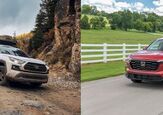
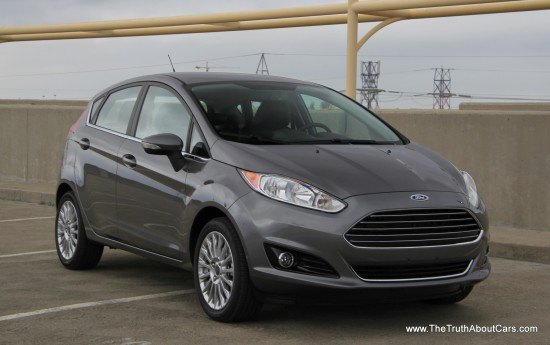
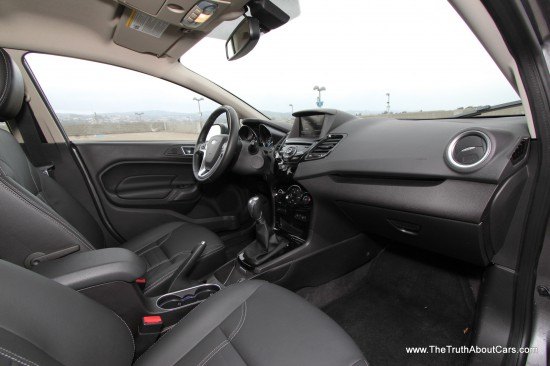





































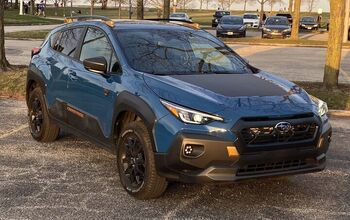
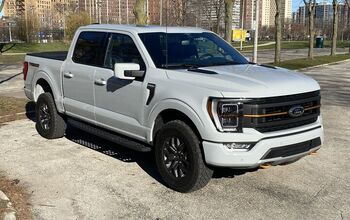
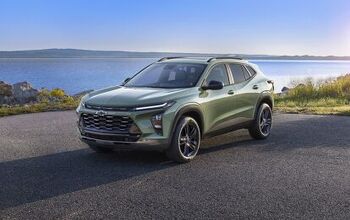
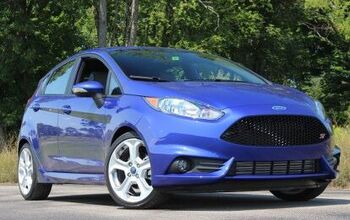
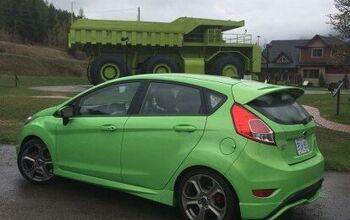
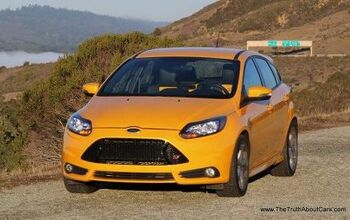
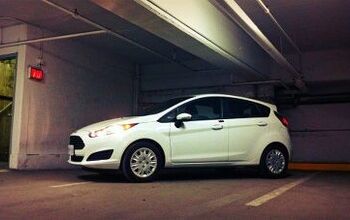
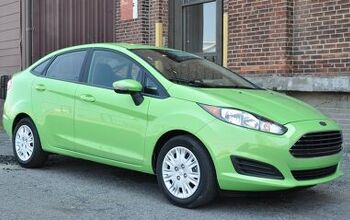
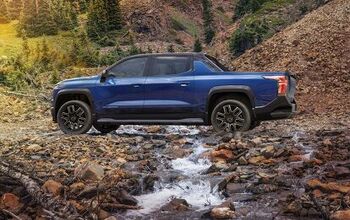
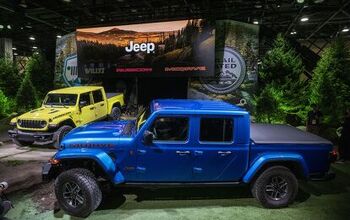



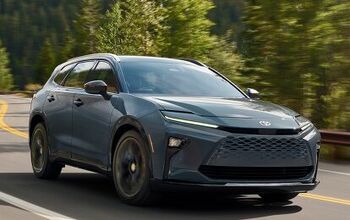
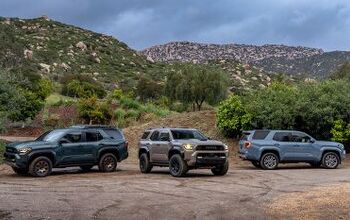
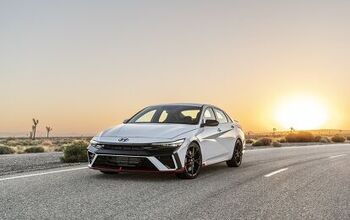
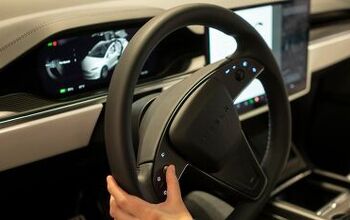
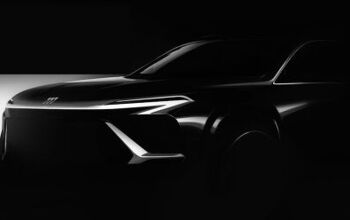
Comments
Join the conversation
I would much prefer to spend a bit more and get a compact class car, Focus, Mazda 3 Civic Corolla. you get more car for the money w/o sacrificing gas mileage and better resale value as well, recently I was looking for a used Yaris, I ended up with a Corolla instead, same year, similar mileage, but way more car for what I paid.
More interior room, (sometimes you just need it), a bit more powerful engine, better ride and sound insulation w/o spending a lot more and little sacrificing mileage.